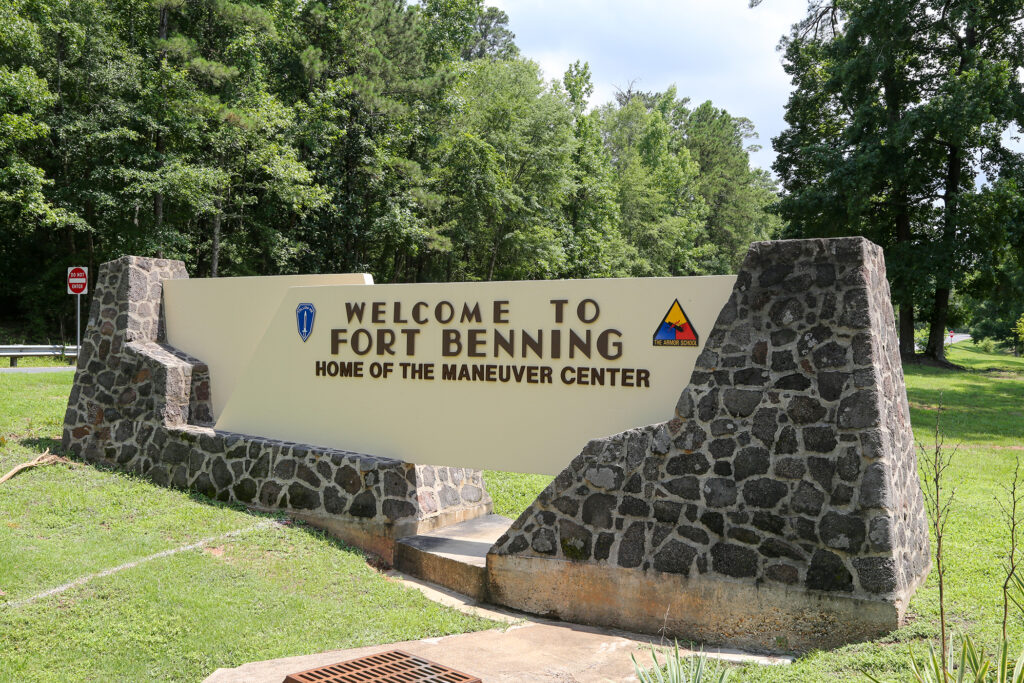The University of Georgia is part of an innovative project that will create recreation areas along the 35,000 acres surrounding Fort Benning, an attempt to spur development in the seven counties that border the military site.
The UGA Carl Vinson Institute of Government, the River Valley Regional Commission and The Nature Conservancy are partnering with Fort Benning on the project.
Spread across six Georgia counties (Harris, Talbot, Taylor, Marion, Stewart and Chattahoochee) as well as one county in Alabama (Russell), the undeveloped land serves as the Army Compatible Use Buffer for Fort Benning, providing the base with a natural barrier to prevent training and testing from interfering with the surrounding communities.
While the Army’s needs dictate that the land remain undeveloped, it still provides numerous opportunities for outdoor recreation and the economic industries that accompany them, said Scott Pippin, a public service associate with the Carl Vinson Institute of Government.
Connecting missions and goals
“The military has its mission and its goals, and those are the drivers behind this,” Pippin said. “We’re trying to connect those to the missions and goals and ideas and visions of the communities. … What can we do to take these efforts beyond just conservation and make it a community development and economic development project?”
Funded by the U.S. Department of Defense, the goal of the collaborative partnership is to work with the surrounding communities and help develop a cohesive plan to grow, promote and better utilize the outdoor activities in the region, such as hiking, rafting and hunting.
Institute of Government faculty will follow the blueprint they have used to develop downtown areas of community parks as they guide community leaders and residents to set priorities and plan the best way to use the Fort Benning property.
“This kind of project is exactly what the University of Georgia, through its land-grant mission, is designed to do,” Jennifer Frum, vice president for UGA Public Service and Outreach, said during the announcement of the collaboration. “It’s a tremendously talented team at the Vinson Institute that will help lead you through a process that will result in real and actionable steps. I strongly feel that these steps will lead to a long-lasting economic impact.”
Identifying needs and opportunities
The partnership began in 2020 and is expected to continue for the next two years. Small working groups of area leaders will be formed to help engage their communities and identify common needs, issues, assets and opportunities. Fort Benning representatives, led by Garrison Commander Col. Alexis Rivera, will be closely involved throughout the project but will not steer the direction of community discussions.
“There’s a lot of resources and opportunities out there that one community may not even realize that another community has,” said Brent Widener, the environmental division support branch chief at Fort Benning. “A shared and common understanding of what the resources are and what’s available is an important part of this. We need to be open and receptive to other development opportunities and strategically work through how we can place those on the landscape if they’re not something that’s fully compatible with the military mission. I think we all need to go into it with a fully open mind and let these local communities share with us what they see and think and work to find where the common ground is.”
In addition to economic development opportunities, the thousands of acres of natural land represents a potentially large conservation opportunity. That aspect of the partnership is being led by The Nature Conservancy, a global environmental nonprofit organization that works to protect land and water.
A unique area
“This is a unique part of the state because it’s on the fall line,” said Deron Davis, the Georgia executive director of The Nature Conservancy and chair of the Army Compatible Use Buffer advisory board. “What you find is really complicated soil structure. You find soils that look like the beach, but you also find soils that look like the Piedmont or in some rare cases the mountain. What the soil looks like dictates what the plants look like, and what the plants look like dictates what the animals look like. So by having a relatively tight geographic region with a mix of soils so close together gives you things that are almost anomalous. The complexity and the variety is what makes this area unique.”
Davis’ hope, and that of the partnership, is for the community to work collectively to develop the region, similar to how nearby Columbus has embraced and utilized the Chattahoochee River.
If the project develops as hoped it could serve as a proof-of-concept for the Vinson Institute, potentially creating a guideline for future similar projects with military installations.
“Fort Benning is not alone in its need to do this kind of work,” Pippin said. “All the installations in Georgia and across the country face these same issues, so this is really an innovative project. The Department of Defense has acknowledged as much and said this is an innovative thing they need to see more of. So it’s really a pilot project for everybody to do something different.”
